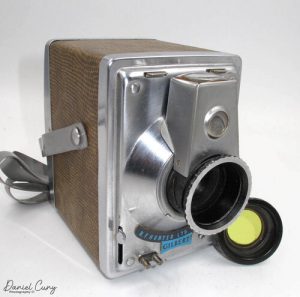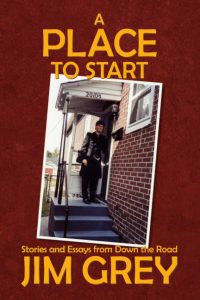This week’s featured post is actually a featured video that is sure to invoke some EXTREME GAS!
It’s no secret that 20 years ago, and again 5 years after that, Nikon re-released 2000 and 2005 Special editions of the Nikon S3 and Nikon SP rangefinders in extremely limited numbers.
Prior to these two cameras, Nikon (then called Nippon Kogaku) had not produced a rangefinder camera since 1964, so it was likely with quite a bit of apprehension that they chose to dust off the assembly line and produce faithful recreations of these two classic cameras.
This week, Bellamy Hunt and the guys over at Japan Camera Hunter bring to you this video which is sort of an unboxing and short intro to both cameras. Between the two, you’re looking at what today has a street value of over $8000 and something that I’ll likely never come close to owning myself, so videos like these will have to suffice.
As the video explains, creating these two cameras was a huge headache for Nikon as they had to find retired workers to help train current employees in the manufacture of these classics. Although an extreme level of effort went into making these cameras as close to the originals as possible, there were some changes such as a switch from ASA to ISO film speeds on the reminder dial, highlighting the 24th instead of the 20th exposure on the counter, and a switch to modern lens coatings for the lenses.
The end result were two museum quality and fully functional cameras that are the closest we’ll likely ever come to a modern day 21st century 35mm rangefinder camera made by Nikon or anyone else.
Here are more great posts from some of my favorite sites:
This week another great review by one of my favorite bloggers, this time it’s the Exakta VX1000 by Alyssa from Aly’s Vintage Camera Alley. As she did with a Canon 7 and a Nikon S2 (which I missed sharing with you all), Alyssa gives a thorough look at a camera she had lusted after for quite some time, plus an AWESOME Youtube video companion for the review showing her actually using the camera and getting the shots she includes in the review. Although not the exact same variant as the earlier VX from Hitchcock’s “Rear Window”, I chose this VX1000 to send to Alyssa because it was both the most functional of all Exaktas I had in my collection, but also the most modern with an instant return mirror, a better film advance, and revised film compartment.
As always, Alex Luyckx and Bill Smith’s Classic Camera Revivial podcast is a fascinating listen, usually with guests from across the film community. And as they always do, a new podcast means a new post on Alex’s website, and this week, the boys have a talk with Stephen Dowling from kosmofoto, and gets his thoughts on recommended Soviet cameras. As he covered in his recent Youtube video, Stephen promotes the classics like the FED 2, Zenit SLR, and Lubitel. The podcast is one of the longest in the series, but that’s because it’s divided up in three parts, also including Soviet chatter with two other members of the Toronto film community. It’s definitely worth a listen and it makes me excited for whoever they have on the show next week!
 Dan Cuny has made a name for himself in recent months with review after review of obscure and uncommon cameras and this week, Dan brings us something called the R.F. Hunter Gilbert box camera. It’s been a while since I’ve come across a camera I’ve never heard of before, but this satin metal and lizard skin box camera with a swiveling viewfinder is definitely one. Dan says this camera sat on his shelf for years before finally taking it out and while the experience wasn’t much different from other box cameras, there’s no denying it’s unique looks and beauty. I don’t know that I’ll ever pick one of these up for myself, but that certainly isn’t because of how it looks!
Dan Cuny has made a name for himself in recent months with review after review of obscure and uncommon cameras and this week, Dan brings us something called the R.F. Hunter Gilbert box camera. It’s been a while since I’ve come across a camera I’ve never heard of before, but this satin metal and lizard skin box camera with a swiveling viewfinder is definitely one. Dan says this camera sat on his shelf for years before finally taking it out and while the experience wasn’t much different from other box cameras, there’s no denying it’s unique looks and beauty. I don’t know that I’ll ever pick one of these up for myself, but that certainly isn’t because of how it looks!
Box cameras are often a dime a dozen. Inexpensive wooden or carboard cubes, with single element meniscus lenses and not much else, but for a short period in the early 20th century, a few companies like Zeiss-Ikon released upgraded box cameras with metal bodies, better lenses, and a choice of aperture. Such is the case of the Zeiss-Ikon Box Tengor, and this week, Matthew Thompson from EMULSIVE takes a look at the model 56/2 Box Tengor which is similar to one that I also have reviewed. As often happens with these wonderful cameras, the Box Tengor punches above it’s weight, delivering excellent results from such a simple camera.
There doesn’t seem to be a shortage of people wanting to share their thoughts on the Canon 7, and last week, Timothy Lebedin from Casual Photophile takes his turn with a beginners review of the Canon 7, one of the best featured and most advanced of Leica Thread Mount rangefinder cameras. Timothy’s Canon 7 was gifted to him by his girlfriend and is his first ever experience with a rangefinder camera, so his insights into whether this makes for a good introduction are very insightful. He covers the basics pretty well and touches upon a fact that I’ve always thought which is that a good rangefinder is easier to achieve focus on compared to many SLRs, especially for people like me with poor vision. I realize not everyone has a girlfriend willing to buy them GAS worthy cameras like this, but if you do, Christmas is coming and a Canon 7 would look very nice under the tree!
There’s no shortage of fans of the Pentax ES II, Asahi Optical’s second auto exposure Pentax, and now Peggy Marsh from Camera Go Camera is a fan. This sad camera came to Peggy with a long list of issues, several of which Peggy was able to resolve herself by removing the bottom plate and giving the old girl a bit of clock oil, but in a weird twist, the camera might have given Peggy something back as within days of getting the camera, Peggy came down with COVID-19. The good news is, she’s already recovered, but also, her down time has given her more opportunities to shoot the camera, which she declares as one of her top 10 favorite cameras!
The most popular film format still in production today is Fuji’s Instax format of instant film used in inexpensive point and shoot cameras, so when it was announced that a new interchangeable lens SLR was being created that used Instax film, the whole world took notice. This week, Alan Duncan from Canny Cameras gives us his thoughts on a camera that he describes as “a mass of contradictions. It is one part brilliant, one part flawed, part revolution, part repurposing. Another part cleverly innovative and another deeply frustrating”. The strangely named Nons SL42 isn’t exactly an easy recommendation. Still, with the Canon EF lens mount (which adapts easily to many other mounts via an adapter), a range of shutter speeds that are appropriate for Instax film, and the immediate satisfaction of instant film, the camera is worth looking at.
It’s a short read, but I’ll never pass up a chance to talk about my favorite black and while film of all time, Kodak’s Panatomic-X. This week, Mike Connealy shares his thoughts and some sample images he got on a 30 year old roll donated to him by a site reader. As literally everyone (including myself) points out, Pan-X is ‘time travel film’ as it seems impervious to the rigors of time, delivering excellent results with hardly any hint at it’s age.

In a post that serves dual purposes, Jim Grey from Down the Road announces the release of his new book, “A Place to Start” and also touches upon the challenge of perfectionism in which he spent countless hours, days, and weeks proofreading and polishing his book to the point where he just needed to tell himself to release it already. Although I’ve never written a book, proof reading is a very important step in writing camera reviews too. Each article I write takes between 2-20 weeks to write and goes through an endless number of drafts and revisions and even after publishing my articles, there are still mistakes, sometimes simplegramm atical ones, others more serious fact based ones. So I sympathize with Jim’s comments about his book, and look forward to picking one up myself. If you’ve ever been to Jim’s site before, you know it is much more than a simple photography site but one filled with stories and other life-long anecdotes.
Kodak has always been a film first company and with only few exceptions, produced cameras for the sole purpose of getting new customers to buy their film. In the mid 20th century a huge number of Brownie cameras came in all shapes and sizes using different kinds of film, most with basic specs, but some better than others. In the category of “better than others” is the Brownie Reflex 20, a simple twin lens box camera, that the Random Camera Blog recently reviewed. This is a camera that I’ve heard good things about before, but one I kind of forgot about. After reading this article and hearing some of the same praise that I’ve heard before, along with some terrific shots on TMax 100 respooled to 620, the Brownie Reflex 20 is officially back on my radar!
I think it is sort of a given that when you make photographs with a camera, that you need to put film in it first. But what if film wasn’t your only option? This week Aloy Anderson from 35mmc tries his hand at shooting photographic paper directly in a camera. As most people know, photographic paper is used to make prints from exposed film using an enlarger, but Aloy cleverly ‘skips the middle man’ and makes some surprisingly good images on the paper itself. It’s a bit involved as you need to cut the paper, load, unload and develop the paper in darkness, but the results are quite interesting and if you happen to have a good supply of photographic paper, might make for a fun distraction this winter!
Winter is here in northwest Indiana. The days are short, the skies are gray, all the trees have lost their leaves, and it’s cold outside. COVID-19 cases are on a dramatic rise and I live in a country led by a government which refuses to do anything meaningful to stop it. Both of my kid’s schools have notified us that they are temporarily discontinuing in person learning and switching to e-learning which means my wife and I have to find ways to balance both of our full time jobs with helping our children navigate their daily lessons, all while not letting the house and our lives completely fall apart.
It’s definitely a tough time and fighting depression is a challenge I face every day, but something I’ve learned in my 42 years of life is that sometimes blanketing yourself in music that matches how you feel can help you meander your way through it.
I know that few, if any of the people who read this site share my taste in music, but this week I wanted to share with you a new music video from one of my favorite bands, “Draconian” and their newest song Sleepwalkers. I think this song is very appropriate as I feel that each day I am sleepwalking through a terrible dream that for the past so many months, no one has been able to wake from.
I know this music is not for everyone, but Draconian’s slow and somber melodies help me. The stark contrast between both singers represents the happy-time-fun-face my wife and I have to put on when we play with our children so as not to worry them, while also dealing with our own inner demons. In the event that at least one of you needs to hear this song, hopefully you’ll enjoy it.



I hate seeing those Nikons! They give me such awful GAS pangs XD
Seriously though, I have never been able to understand why Nikon didn’t just leave a production line for either camera open, limited to 1-2,000 units per year. Why go through all that hassle to then just do one run and close up shop again!?